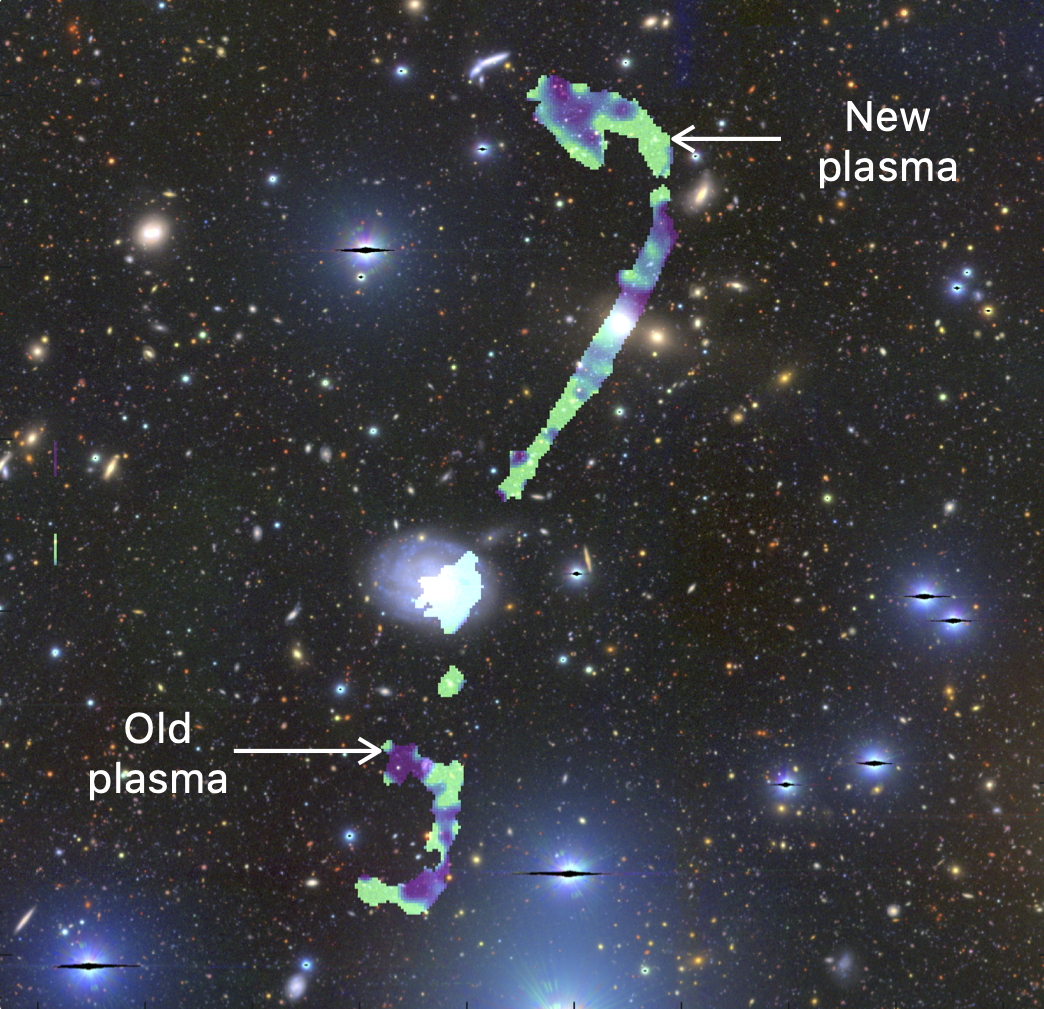A lot of things in space are so big that they make you scratch your head and go “Uh?” – chiefly among them are the Giant Radio Galaxies (GRGs), and they have everything you might want in a monstrous celestial object. These galaxies have extremely active supermassive black holes spewing jets of plasma across millions of light-years. These jets emit radio waves, letting astronomers discover them.
ADVERTISEMENT GO AD FREE
The latest one in this class is even more puzzling. It has been dubbed Inkathazo, and it is truly massive, with cosmic jets spanning 3.3 million light-years from one end to the other. That’s equivalent to 32 times the diameter of our galaxy, the Milky Way – and these jets don’t look like those of other GRGs.
“We nicknamed this giant galaxy ‘Inkathazo,’ meaning ‘trouble’ in isiZulu and isiXhosa because it has been a bit troublesome to understand the physics behind what’s going on here,” the study’s first author Kathleen Charlton, a Master’s student at the University of Cape Town, said in a statement.
“It doesn’t have the same characteristics as many other giant radio galaxies. For example, the plasma jets have an unusual shape. Rather than extending straight across from end-to-end, one of the jets is bent.”
As if its size was not enough, Inkathazo is not in an isolated environment like other GRGs, but rather at the center of a cluster, which should make it difficult to have these enormous jets. It seems that troublesome Inkathazo didn’t know and didn’t care about that!
“This is an exciting and unexpected discovery,” said co-author of the study Dr Kshitij Thorat, from the University of Pretoria. “Finding a GRG in a cluster environment raises questions about the role of environmental interactions in the formation and evolution of these giant galaxies.”
Thanks to the extraordinary power of the MeerKAT telescope, astronomers were able to do more than just discover this object: They were able to track the ages of the plasma in the jets, showing that one side has plasma a lot younger than the other. They could also see that some of the electrons in the plasma were given unexpected boosts of energy, possibly an interaction between the jets and the hot gas that exists between the cluster galaxies.

A spectral age map of “Inkathazo”. Cyan and green show younger plasma, while purple indicates older plasma.
Image Credit: K.K.L Charlton (UCT), MeerKAT, HSC, CARTA, IDIA.
“This discovery has given us a unique opportunity to study GRG physics in extraordinary detail,” said Thorat. “The findings challenge existing models and suggest that we don’t yet understand much of the complicated plasma physics at play in these extreme galaxies.”
MeerKAT has been a revolutionary radio observatory, responsible for the discovery of many GRGs. The next big thing in radio astronomy is the Square Kilometer Array (SKA) and half of it will grow over the next two years from MeerKAT.
“We’re entering an exciting era of radio astronomy,” added co-author Dr Jacinta Delhaize, a researcher at the University of Cape Town. “While MeerKAT has taken us further than ever before, the SKA will allow us to push these boundaries even further and hopefully solve some of the mysteries surrounding enigmatic objects like giant radio galaxies.”
ADVERTISEMENT GO AD FREE
The paper is published in the Monthly Notices of the Royal Astronomical Society.
Source Link: Meet "Inkathazo", The Troublesome Monster 32 Times Wider Than Our Galaxy